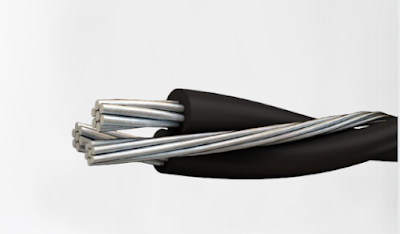What is 19/33kV Cable Meaning?
In the realm of electrical engineering and power distribution, the terminology surrounding cables can often seem like a labyrinth of numbers and letters, leaving many puzzled about their true meaning and significance. One such enigma is the 19/33kV cable. To the untrained eye, it may appear as nothing more than a string of numbers and letters, but its importance in the world of energy transmission cannot be overstated. In this comprehensive guide, we delve deep into the essence of 19/33kV cables, deciphering their meaning, exploring their applications, and uncovering their pivotal role in powering our modern world.
Understanding the Basics: What is 19/33kV Cable?
At its core, the notation "19/33kV" refers to the voltage rating of the cable. In this context, "kV" stands for kilovolts, which is a unit of electrical potential equal to one thousand volts. Therefore, a 19/33kV cable is designed to operate within a voltage range of 19 kilovolts to 33 kilovolts. This classification is crucial as it determines the cable's capability to handle high-voltage transmission, making it an integral component of medium voltage power distribution systems.Applications and Utility: Where Are 19/33kV Cables Employed?
The versatility and reliability of 19/33kV cables render them indispensable across various sectors of industry and infrastructure. These cables are commonly utilized in medium voltage distribution networks, including substations, industrial complexes, commercial buildings, and residential areas. Their robust design and high voltage tolerance make them ideal for transmitting electricity over long distances with minimal power loss, ensuring efficient energy distribution to end-users.In addition to their primary function in power transmission, 19/33kV cables also find application in renewable energy projects such as wind farms and solar power plants. As the global shift towards sustainable energy sources gains momentum, the demand for reliable medium voltage cables capable of integrating renewable power into the grid continues to rise, further solidifying the importance of 19/33kV cables in modern energy infrastructure.
Technical Specifications: What Sets 19/33kV Cables Apart?
Beyond their voltage rating, 19/33kV cables exhibit several distinguishing features that contribute to their superior performance and durability. These include:Insulation: To withstand the high electrical stresses associated with medium voltage transmission, 19/33kV cables are insulated with materials such as cross-linked polyethylene (XLPE) or ethylene propylene rubber (EPR). This insulation not only provides electrical protection but also enhances the cable's resistance to environmental factors such as moisture, heat, and chemical exposure.
Conductor Material:
The conductors used in 19/33kV cables are typically made of copper or aluminum, both known for their excellent conductivity and mechanical strength. The choice of conductor material depends on various factors such as cost, weight, and specific application requirements.
Armor and Sheathing:
To safeguard the cable against mechanical damage and external hazards, it is often equipped with armor and sheathing layers. These additional components provide mechanical protection, corrosion resistance, and ensure long-term reliability in diverse operating conditions.
Benefits and Advantages: Why Choose 19/33kV Cables?
The adoption of 19/33kV cables offers a multitude of benefits to power utilities, industries, and end-users alike. Some key advantages include:Enhanced Reliability:
With their robust construction and high voltage tolerance, 19/33kV cables deliver reliable performance, minimizing downtime and disruptions in power supply.
Efficient Power Transmission:
By reducing electrical losses and voltage drop, 19/33kV cables enable efficient transmission of electricity over medium distances, optimizing energy distribution networks.
Flexibility and Adaptability:
The versatility of 19/33kV cables allows for seamless integration into existing infrastructure and facilitates future expansion or upgrades to meet evolving energy demands.
Environmental Sustainability:
As part of the broader transition towards clean energy solutions, the use of 19/33kV cables supports environmentally friendly practices by enabling the integration of renewable energy sources into the grid.
In conclusion, the significance of 19/33kV cables transcends mere numerical notation, representing a cornerstone of modern energy infrastructure and a testament to human ingenuity in harnessing and distributing electrical power. Whether facilitating the transmission of conventional or renewable energy sources, these cables serve as lifelines that power our communities, industries, and economies, illuminating the path towards a more sustainable and electrifying future.
Future Outlook and Innovation: Evolution of 19/33kV Cable Technology
As technology advances and energy requirements evolve, the development of 19/33kV cables continues to progress, driven by innovations in materials, design, and manufacturing processes. Emerging trends such as the integration of smart grid capabilities, enhanced insulation materials, and improved conductor technologies promise to further enhance the performance and efficiency of 19/33kV cables, ensuring their continued relevance in the ever-changing landscape of power distribution.In conclusion, the significance of 19/33kV cables transcends mere numerical notation, representing a cornerstone of modern energy infrastructure and a testament to human ingenuity in harnessing and distributing electrical power. Whether facilitating the transmission of conventional or renewable energy sources, these cables serve as lifelines that power our communities, industries, and economies, illuminating the path towards a more sustainable and electrifying future.
Visit also:
https://znergycableaustralia.blogspot.com/2024/03/what-do-you-mean-by-type-409-cable.html
https://znergycableaustralia.blogspot.com/2024/03/all-about-stainless-steel-capillary-tube.html
https://znergycableaustralia.blogspot.com/2024/03/all-about-stainless-steel-capillary-tube.html
https://znergycableaustralia.blogspot.com/2024/03/why-is-triplex-cable-twisted.html
https://znergycableaustralia.blogspot.com/2024/03/how-many-amps-can-4mm-solar-cable-take.html
https://znergycableaustralia.blogspot.com/2024/03/how-many-amps-can-4mm-solar-cable-take.html



Comments
Post a Comment